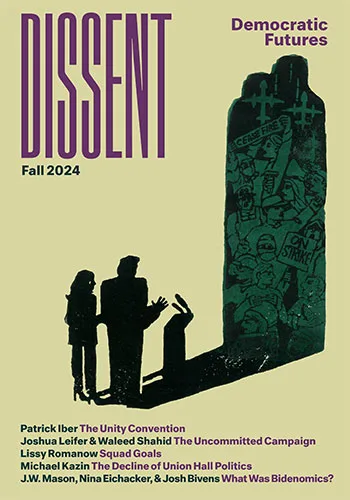Two Decades After the Fall: Between Utopian Hopes and the Burdens of History
Two Decades After the Fall: Between Utopian Hopes and the Burdens of History
Two Decades After the Fall: Shlomo Avineri
“HOW BEAUTIFUL was the republic—under the monarchy” was the refrain attributed to disappointed republicans in the wake of the French Revolution that started with the heady Declaration of the Rights on Man and Citizen and very quickly deteriorated into Jacobin terror, Thermodorian reaction, and eventual Napoleonic imperial rule.
Something similar, though not as extreme, also happened to the many hopes connected with the annus mirabilis of 1989: With Mikhail Gorbachev, Lech Walesa, and Vaclav Havel capturing so many people’s imagination, what could one expect if not a linear progression towards democracy, liberalism, and perhaps even an Eastern European version of social democracy? Some even predicted a messianic “end of history.”
It was not to be. And what stands out is that the overall picture is not uniform: while Russia is in the iron grip of a neo-authoritarian regime, Ukraine has failed not only to find its identity but is on the brink of becoming a failed state. Poland, Hungary, the Czech Republic, and, somewhat surprisingly, Slovakia went through relatively smooth transitions, consolidating democratic structures and implementing, more or less, successful market economies. But this sometimes happened at the cost of a jejune political scene—full of boring and trivial political infighting—and, in the case of Hungary, it also resulted in the reintroduction of ugly racist overtones into the public discourse.
Some of the former Yugoslav republics managed to develop towards democratic and liberal structures. But others—Serbia, for example—still groped for a firm institutional and ideological foundation. And although Kosovo has achieved its independence, the tensions between Serbia and Kosovo have not yet been resolved. Romania and Bulgaria may have become members of the European Union, but in all truth their political institutions and economies are still far from what are considered European standards. Belarus is a nasty dictatorship, and the Central Asian former Soviet republics show all the signs of having joined the club of Third-World sultanistic tyrannies.
Personally, I never believed that the end of Soviet-style communism would by itself lead to liberal democracy—or that post-communist developments would be uniform and conform to a single matrix (see my “The Return to History”, The Brookings Review [Spring 1992], pp. 30-33). The emergence of liberal democracy in the West was far from a linear, pre-determined development and was, in each case, the outcome of specific social, political, and economic conditions, and the same was true in East: Post-communist countries could not overcome their historical legacies, and as a result, they did not follow an undifferentiated and common track. After all, Germany and Italy went through Nazism and fascism; and France’s political development took decades of unrest, revolutions, and counter-revolutions before finally consolidating after de Gaulle’s 1958 coup d’etat—an event that most Frenchmen, even today, prefer not to call by its true name. How could the developments be different in countries with such disparate histories as Russia, Poland, Ukraine, Estonia, Romania, and the Czech Republic?
Looking for the causes for these highly differential and disparate developments, eventually one factor stands out: the degree of the existence of a civil society, coupled with memories, real or constructed, of pre-communist institutions that could become the foundation for liberal democratic politics. This is the reason why the four Visegrad countries—despite the differences between the Czech and Polish political history—could draw on such elements of a “usable past,” while Russia, a country that completely lacked a tradition of civil society, has failed to translate the lofty ideas that informed Gorbachev and Yeltsin into practical reality—and this is why it has become a modern version of Petrine authoritarianism. Ukraine’s difficulties also reflect a similar lack of historical, intellectual, and institutional foundations for state-building.
This does not, of course, mean that the future of any of these countries is totally over-determined by its past. Croatia and Slovakia are examples of societies that have shown themselves able to exorcise some of their historical demons. But it takes time, a facilitating context, and political leadership as well as geopolitical conditions that are sometimes ultimately outside the country’s control (Georgia’s ambivalent development clearly points to these geopolitical constraints).
There is another aspect that has to be considered here: the conventional wisdom that democratic development necessarily goes hand-in-hand with the emergence of a market economy has equally been falsified. China is certainly a major example of how continued political authoritarianism can accompany an impressive capitalist development. I am far from convinced that this Chinese combination is doomed to snap at one point or another: again, Chinese Confucian traditions of hierarchy and state hegemony seem to contribute to the ability of the current Chinese communist elite to maintain political control while allowing, albeit in a controlled way, the market forces free reign. This may change, but it doesn’t seem likely.
To sum up: Looking at history—rather than just quantifiable socio-economic data—does indeed help to explain the divergent post-1989 developments. I have little doubt that these countries’ pasts will continue to determine much of their future developments. The post-1989 hopes were informed by the loftiest of ideas—ideas that were sometimes coupled with facile anti-Soviet triumphalism—but they did, unfortunately, also often lack a firm foundation in the complex realities of the societies involved.
Shlomo Avineri, who teaches political science at the Hebrew University of Jerusalem, is the author, among others, of The Social and Political Thought of Karl Marx, Hegel’s Theory of the Modern State and The Making of Modern Zionism.





